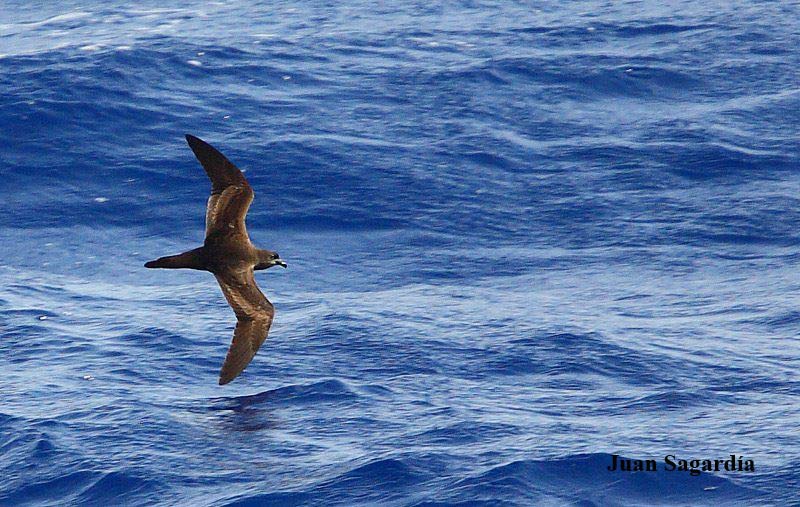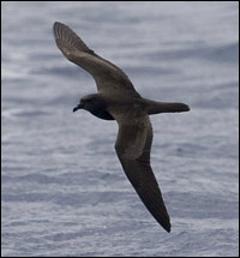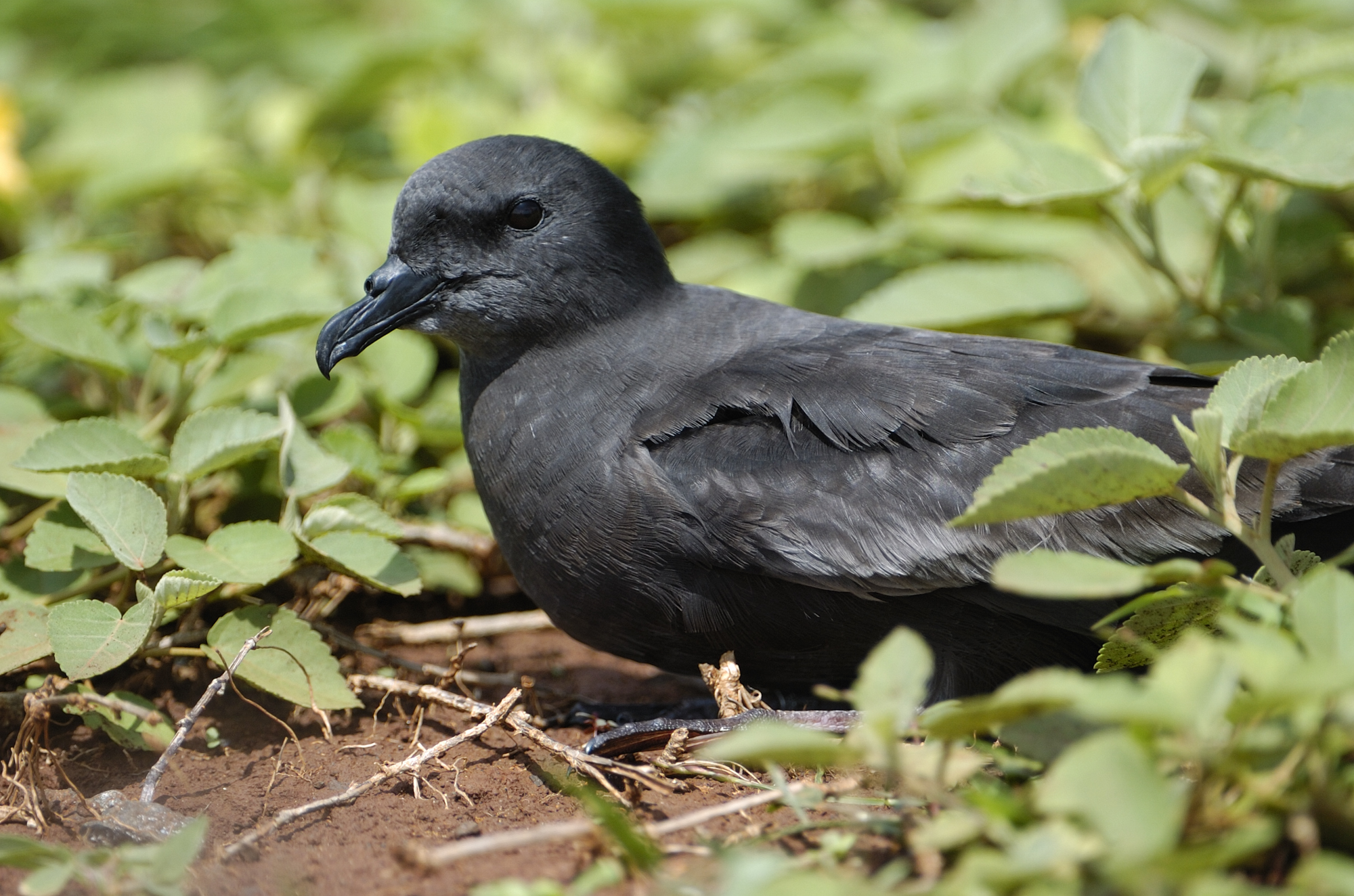
Bulweria bulwerii
TAXONOMY
Procellaria bulwerii Jardine and Selby, 1828, Madeira.
OTHER COMMON NAMES
French: Petrel de Bulwer; German: Bulwersturmvogel; Spanish:
Petrel de Bulwer.
PHYSICAL CHARACTERISTICS
10.2–11.0 in (26–28 cm); 2.8–4.6 oz (78–130 g); wingspan
26.8–28.7 in (68–73 cm). One of the smallest procellarids.
Dark brown plumage, long wings, flies with tail narrowed to
a point.
DISTRIBUTION
Throughout the tropics in eastern Atlantic and Pacific oceans.
One study suggests that Bulwer’s petrel prefers warm waters of
intermediate salinity, while Joaquin’s petrel (Bulweria fallax)
prefers slightly higher salinity levels.
HABITAT
Marine, strongly pelaqic. Breeds on barren, remote islands.
BEHAVIOR
Nocturnal. Both sexes make a barking call known as a “woof.”
They do not call while flying.
FEEDING ECOLOGY AND DIET
Feeds primarily at night on fish, squid, some crustaceans and
sea-striders, by seizing prey from the surface.
REPRODUCTIVE BIOLOGY
Breeding season starts in April or May. Nest in burrows,
crevices, cracks, caves, or under other cover. The single white
egg is incubated for 44 days; the chick is blackish when it
hatches; fledging after 62 days.
CONSERVATION STATUS
Not threatened.
SIGNIFICANCE TO HUMANS
Collected for food and fish bait on Atlantic islands.
Other popular Animals
Photo Gallery of - Bulwer’s petrel




 Animalia Life
Animalia Life